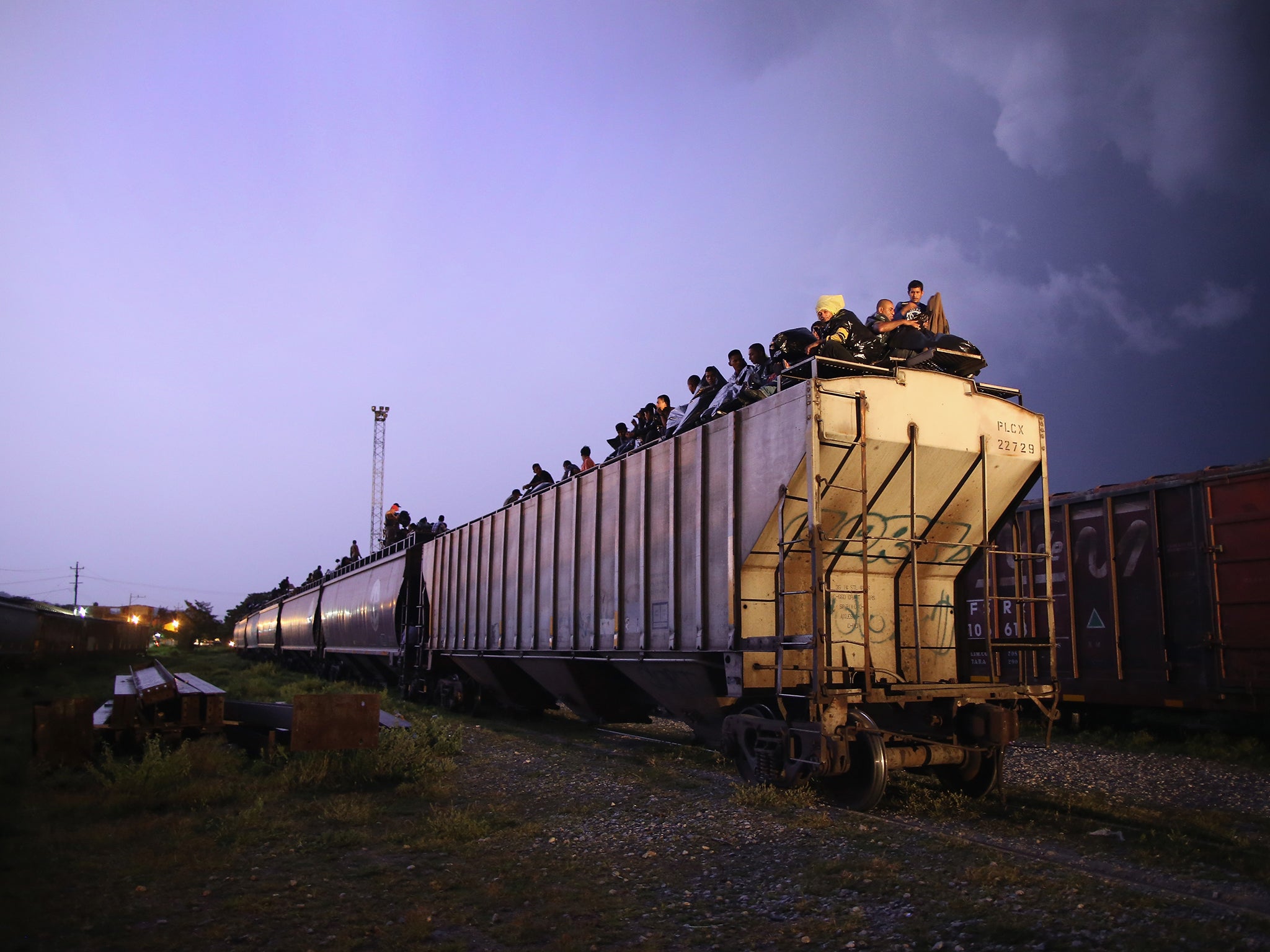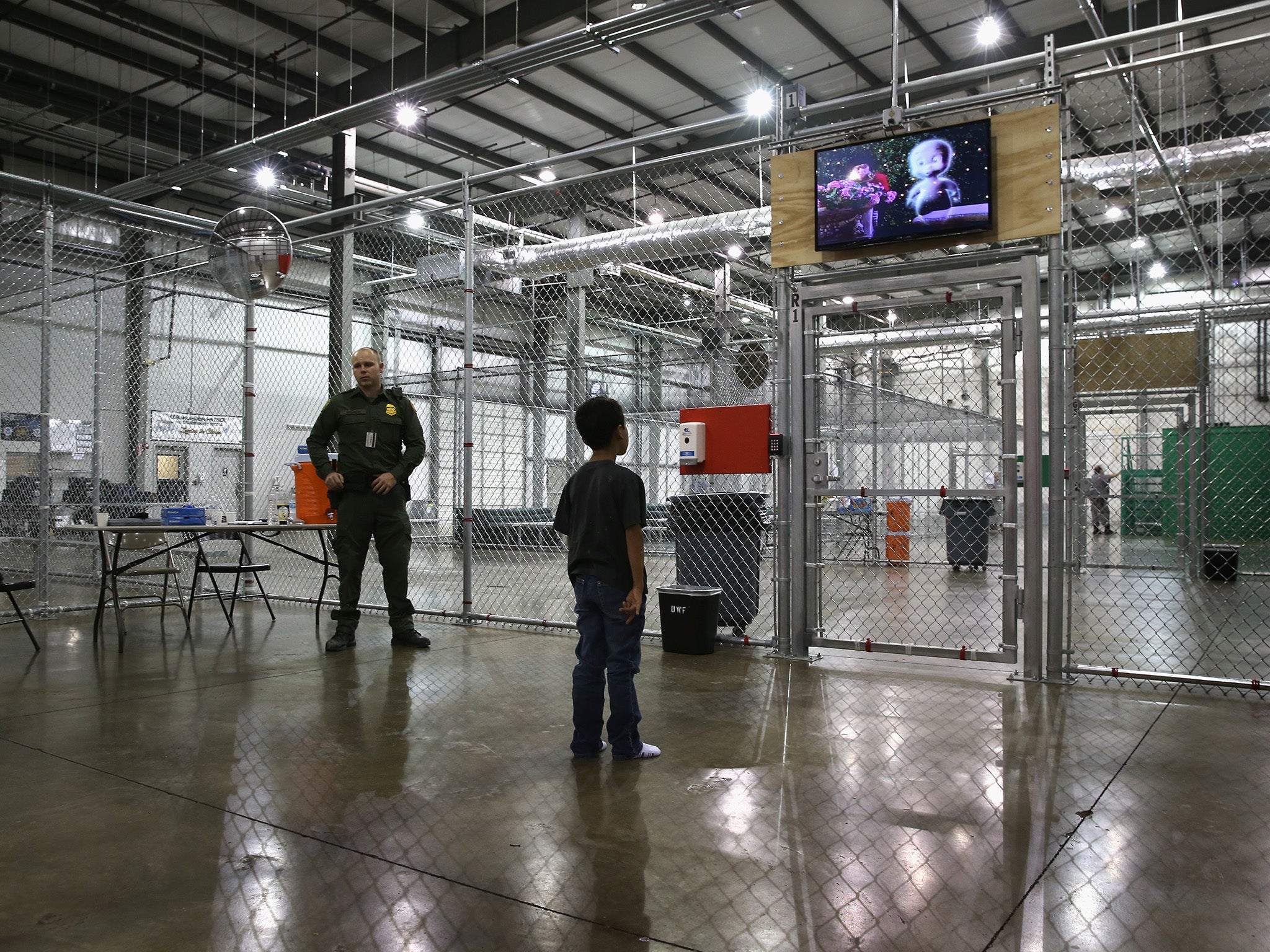US-Mexico border: How hope, aspiration and love drives migrants through a perilous journey
John Moore, a Pulitzer Prize-winning photographer, has spent a decade covering the lives of undocumented immigrants
Your support helps us to tell the story
From reproductive rights to climate change to Big Tech, The Independent is on the ground when the story is developing. Whether it's investigating the financials of Elon Musk's pro-Trump PAC or producing our latest documentary, 'The A Word', which shines a light on the American women fighting for reproductive rights, we know how important it is to parse out the facts from the messaging.
At such a critical moment in US history, we need reporters on the ground. Your donation allows us to keep sending journalists to speak to both sides of the story.
The Independent is trusted by Americans across the entire political spectrum. And unlike many other quality news outlets, we choose not to lock Americans out of our reporting and analysis with paywalls. We believe quality journalism should be available to everyone, paid for by those who can afford it.
Your support makes all the difference.As Donald Trump stood before his jubilant supporters at the end of his thank you tour in Alabama in December 2016 chants of “build the wall” echoed around the Ladd-Peebles Stadium.
The boisterous crowd interrupted the then president-elect to remind him of the promise he had made during the election campaign: to clamp down on people illegally crossing the border into the US.
His response “we are going to build the wall”, was met with rapturous applause.
The infamous structure, despite being practically impossible to deliver, serves as a physical and metaphorical blockade stopping undocumented immigrants entering the US from Mexico and Central America, 11 million of whom already reside in the country.
The vast majority are employed, contribute to the economy and are active members of the community, but their quasi-legal status means they are often presented as a statistic or used as a political football.
John Moore, a Pulitzer Prize-winning photographer and special correspondent at Getty Images, has dedicated the last 10 years of his life to following the journey that has been taken by millions of people from Mexico and Central America in their bid to come to the US.
He has done so with one primary objective: humanising and putting a face to the issue.
His work tells the stories of those who have put themselves at risk in the hope of living the American dream, as they leave everything they know behind in search of a better life.
Many are looking to escape the violence and crime which is often rampant in their home towns, others are hoping to reunite with family members currently in the US, while some seek economic reward - hoping to send back their potential income to the families they have left behind.
“They make this difficult and dangerous journey as an act of love. They leave everything behind and move into an uncertain future often at great risk,” Mr Moore says.
As he talks of what many go through and the photographs he has subsequently taken Mr Moore explains that his intention is not only to inform, as an impartial set of eyes watching events unfold, but also to make the observer understand the emotion behind that specific moment.
“People often forget the details of a picture but they will remember how it made them feel,” he says.
It is these emotions that put a human face on immigration. The issue is not resolved by just building a wall; it is about understanding why so many dream of coming to the US and what they do to get there, he says.
People often forget the details of a picture but they will remember how it made them feel
The journey itself is perilous and for many Central Americans the route to the US starts by getting to Mexico, which entails jumping aboard a freight train colloquially referred to as “La Bestia”, or the beast.
The train moves goods from Central America to Mexico in a journey which lasts at least 20 days and with no available seats migrants are forced to perch on the roof.
This presents a number of gruelling and life threatening challenges notably dealing with the piercing heat from the naked South American sun.
There is little respite, shade is hard to come by and the metal of La Bestia’s roof is often unbearably hot throughout the day.
The intense heat causes exhaustion but falling asleep on La Bestia is dangerous to say the least.

With trees and branches either side many are brushed off the roof of the moving vehicle, and are maimed or killed. It is an arduous battle and many lose their lives as they fight through the exhaustion and unforgiving journey.
Beyond the physical danger, exploitation aboard La Bestia is common practice. Los Zetas and MS-13, two of the most of powerful gangs in South America, control the train tops and migrants are forced to pay between $6000 and $12000 to smugglers just to stay aboard the train.
Manoeuvring and managing through the politics of La Bestia and paying the right people is a significant challenge which doesn't finish once the journey comes to an end.
Having the right smugglers on side is important for the final leg of the journey.
The final hurdle, facing US border patrol, is often the most difficult aspect of making it into the US.
The more luxury smuggling services have access to underground tunnels, while at the cheaper end migrants are left to try and sneak past US border patrol of their own accord.
The military style border patrol works to stop undocumented immigrants crossing the border, often behaving in an “inhumane” manner, Mr Moore says.

Border patrol agents actively work to stop people being with loved ones and prevent them from bettering their lives - it is this aspect of the job Mr Moore describes as being against human nature.
While some manage to get through, a large number do not and Mr Moore witnessed US border patrol chasing down a group at the border using helicopters and dog units.
After a chaotic chase officers located those trying to cross the border illegally and apprehended a man and woman.

A photograph taken by Mr Moore shows the pair handcuffed to each other, knowing that their journey had come to an end and they would not make it to the US.
The woman is softly caressing and comforting the man, who in turn is looking at her reassuringly.
But the couple's backstory remains a mystery, the journey they had taken, what they had left behind and what may or may not have been waiting for them in the US is unclear.
“I will never know,” Mr Moore says. “I don’t know if they came together at all or if they only met while racing away in the chaos of the chase from US border patrol.
“Sometimes moments leave me with more questions than answers.”
The stories of undocumented immigration are often like this, unsolved queries and a lack of certainty but Mr Moore says he hopes his work can continue to shine a light on this salient issue.
John Moore has released a book, Undocumented: Immigration and the Militarization of the United States-Mexico Border, showcasing a series of photographs he has taken from the last decade.

Join our commenting forum
Join thought-provoking conversations, follow other Independent readers and see their replies
Comments